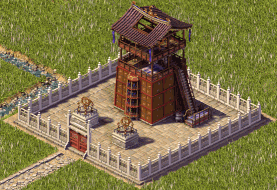

#Emperor rise of the middle kingdom maximum forts series#
The title continued in the Carolingian family until 888, and from 896 to 899, after which it was contested by the rulers of Italy in a series of civil wars until the death of the last Italian claimant, Berengar, in 924. In 800, Pope Leo III crowned the Frankish king Charlemagne Emperor of the Romans, reviving the title in Western Europe after more than three centuries. The largest territory of the empire after 962 was Eastern Francia, though it also came to include the Kingdom of Bohemia, the Kingdom of Burgundy, the Kingdom of Italy, and numerous other territories. The Holy Roman Empire was a multi-ethnic complex of territories in central Europe that developed during the Early Middle Ages and continued until its dissolution in 1806. Otto I: German king from 936 and emperor of the Holy Roman Empire from 962 until his death in 973 his reign began a continuous existence of the Holy Roman Empire for over eight centuries.Charlemagne: The first recognized emperor in Western Europe since the fall of the Western Roman Empire three centuries earlier, known for unifying Francia and ushering in a period of cultural renaissance and reform.The title of Emperor was again revived in 962 when Otto I was crowned by Pope John XII, fashioning himself as the successor of Charlemagne and thus establishing the Holy Roman Empire.After the dissolution of the Carolingian Dynasty and the breakup of the empire into conflicting territories, Otto I became king of Francia and worked to unify all the German tribes into a single kingdom and greatly expand his powers.In 800, Pope Leo III crowned Charlemagne Emperor of the Romans, reviving the title in Western Europe after more than three centuries, thus creating the Carolingian Empire, whose territory came to be known as the Holy Roman Empire.


 0 kommentar(er)
0 kommentar(er)
